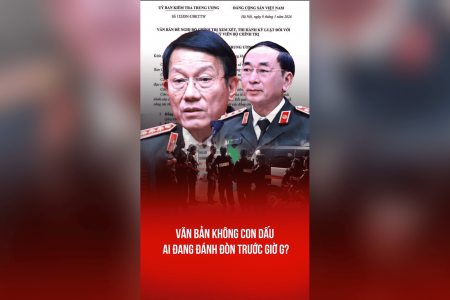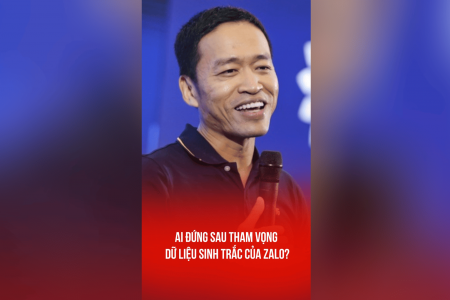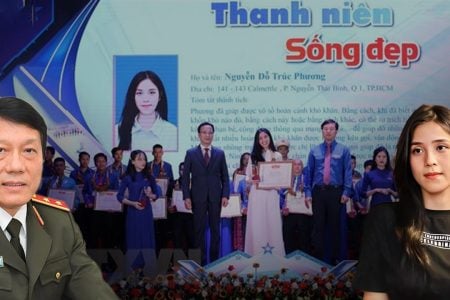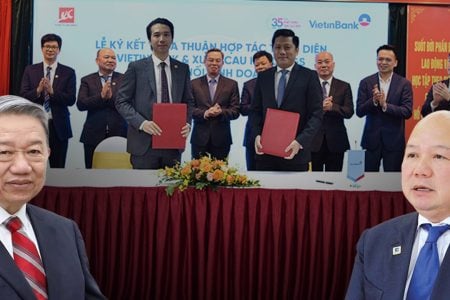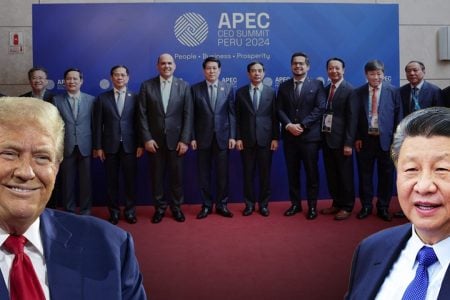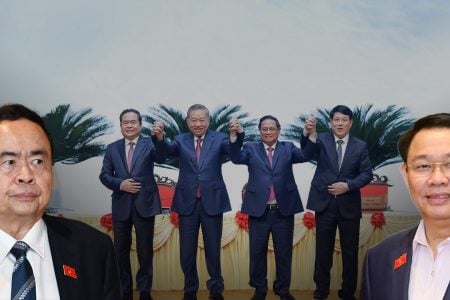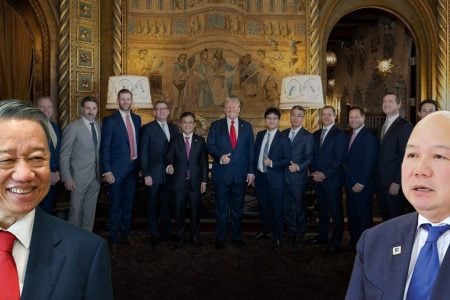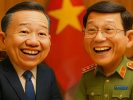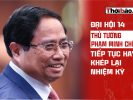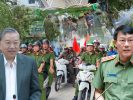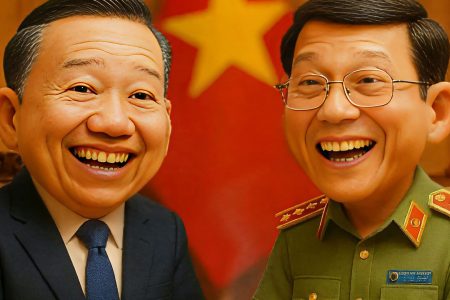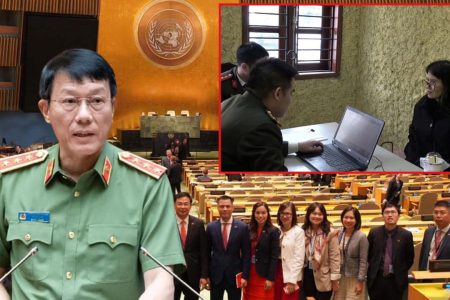
It took a month after the US presidential election, the Vietnamese leaders sent their congratulations to Mr. Joe Biden. In Vietnam, people know Donald Trump better and expected him to be re-elected more than Joe Biden. That is because not only Donald Trump has been to Vietnam twice (2017 and 2019) but because he is also highly appreciated by the Vietnamese in the anti-China policy.
China’s assertiveness in the invisible international arena is pushing Hanoi closer to Washington. But expert Benoît de Tréglodé, director of the French Military School’s Strategic Research Institute (IRSEM), notes that Vietnam’s relationship with the US always contains a lot of emotions. This explains why economic factors dominate over politics. The reality is so, don’t be confused!
If its geostrategic position right in the middle of the Indo-Pacific region has turned Vietnam into a pivotal nation for the US’s commitment in the region to deal with China, Vietnam will continue to maintain a balanced policy and there is no choice of factions.
No matter what strategists desire in Washington, the Association of Southeast Asian Nations (ASEAN) and its member states are not yet ready to join an anti-China coalition led by the US. However, these countries will not follow China to pull the US out of regional problems.
South China Sea: America is tough with China, Vietnam rejoices silently
The year 2020 marks 25 years of resuming bilateral relations between the two former enemies (1995-2020). Seen from Hanoi, the Trump doctrine is not the source of any renewed American vision or strategy for Asia. Trump’s remarks were more „eloquent“ than ever and no one expected those tough words to be highly appreciated by the Vietnamese people.
Fundamentally, US policy towards Hanoi has been accompanied by a political shift to Asia dating back to the Obama administration, initially „pivoting“ and then „rebalancing“ (rebalancing). As early as 2009, then-Secretary of State Hillary Clinton had declared that the US „returned“ to Southeast Asia.
In 2013, Vietnam and the US signed a comprehensive partnership agreement to strengthen the bilateral relationship on defense. This is shown in detail after the 2014 crisis between Hanoi and Beijing in the Hoang Sa (Paracel) when China deployed an oil and gas exploration rig in Vietnam’s exclusive economic zone and deadlock diplomacy in 2019 around the Vanguard Bank.
Regardless, first of all, the two countries tried to resolve the aftermath of the devastating war (1965-1975). Both sides signed a new agreement to deal with Agent Orange-related issues such as poison decontamination at Da Nang and Bien Hoa airports, or providing humanitarian assistance to victims in affected areas.
For its part, Vietnam allowed 726 remains of the 1973 American soldiers that were lost in battles. Iconically, Daniel Kritenbrink was the first US ambassador, while in office, to visit the Truong Son National Cemetery, where more than 10,000 Vietnamese soldiers died in the conflict.
To mark this progress, Vietnam participated in the joint exercise between the US and ASEAN for the first time in 2019, and especially, Vietnam is also one of the three countries that are specially exempt from the application of the law „Countering America’s. Adversaries Through Sanctions Act” to continue to buy weapons from Russia, the country supplying the top weapons to the Vietnamese army.
At the same time, Washington increased support for Hanoi in its territorial disputes with Beijing in the South China Sea. In July 2020, both countries signed a memorandum of understanding to „assist Vietnamese fishermen against illegal acts of intimidation“ by China. In October 2020, Marshall Billingslea, Donald Trump’s special envoy for the mastery of weapons, on the occasion of his visit to Hanoi, reaffirmed the ability of the US to oppose China’s layout of missiles aimed at „the US Navy and the allied countries” in Asia.
The new US administration does not need to wait to immediately announce that the US Indo-Pacific strategy will not change. But in any case, Vietnam has always been hesitant about the overly overarching direction of US multilateral diplomacy. In 2019, in the latest White Paper on national defense, Vietnam added a fourth ‚NO‘ as the key principle for the country’s security policy, promoting not to “use force or threaten to use force in international relations.”
its embargo on arms sales in April 2016, no major arms sale and purchase agreement has been signed between the two countries.
Supervising strengthening bilateral commercial relations
If the strengthening of relations with the US is publicly announced, Vietnam’s leaders will focus primarily on the economic sector. The US is the leading destination for Vietnam’s export industry. But not so that Donald Trump missed the opportunity to criticize the trade deficit with this country when accusing the Hanoi government of implementing fraudulent policies.
The US trade deficit with Vietnam is growing and growing rapidly, from $47 billion in 2019 to $63 billion in 2020. Washington also thinks that Hanoi has lowered the price of the local currency to facilitate exports. In October 2020, the administration of Donald Trump viewed the Vietnamese leaders as currency manipulators, voicing their threats to enact many new tariff measures.
This behavior of the US explains partly that Vietnam has always advocated towards more multilateralism. In 2015, Mr. Trump’s turning point towards the Trans-Pacific Partnership (TPP) affected Vietnam’s confidence. In Hanoi, it is remembered that the debates surrounding the agreement sparked criticism from the Vietnamese community in the US, human rights unions, and associations regarding how to govern. country and government development model.
In such a context, at the end of eight years of negotiation, the Regional Comprehensive Economic Partnership (RCEP) was signed on November 15, 2020, in Hanoi among 10 ASEAN member countries, Australia. China, Japan, South Korea, and New Zealand, Vietnam welcome an agreement that allows the country to limit its dependence on the US market for high-growth sectors (footwear, agriculture, and automotive, electronics, telecommunications).
What is the new position of the US in Southeast Asia?
The dramatic return of these coalition strategies and economic pragmatism, the origins of balanced diplomacy in Southeast Asia, are ultimately faced with the rise of Asian voices increasingly strong and public.
From Hanoi’s point of view, the unpredictable nature and malfunctions of US policy toward the region are reinforcing the views of those who argue that the presence of the West in Southeast Asia, over time, only seem to give rise to chaos, colonialism, war and now the „contagious“ damage caused by a new confrontation between the US and China.
For them, China’s reaffirmation of power does not necessarily come with a return of conflicts, but rather to promote economic growth and political stability for many countries, mostly authoritarian states, which are less and less subject to Western intervention.
The biggest challenge for Beijing in 2021, the 100th anniversary of the founding of the Communist Party, is that everything has to be successful, is to gain acceptance, even if it is delusional, that China has peaceful conduct. Therefore, in any case, Vietnam is well aware that for Washington they are just a situational ally in the US competition with Beijing. The new leadership in Hanoi knows well that they will have to continue to diversify and multilateralize foreign policy to protect national interests, a strategy that is also a way of reassuring China.
Thoibao.de (Translated)
Source: https://www.rfi.fr/vi/vi%E1%BB%87t-nam/20210506-viet-nam-hoa-ky-dong-minh-chien-luoc



